How I Was Made
If they spend any amount of time browsing through Wings over Sealand, alert readers may well find themselves noticing a number of recurring themes popping up throughout its pages, and one of the commonest is a violent contempt for nearly all videogames journalism. This is because, not to put too fine a point on it, nearly all videogames journalism is a crime against humanity. (Either in the literary, ethical or sociological senses, and usually all three.)
Practiced largely by cynical-yet-incompetent careerists who regard themselves as essentially the games industry's door-to-door salesmen – rather than as a safeguard standing between the industry and the public, protecting consumers from wasting their money on terrible products – the dismally low standard of nearly all videogames journalism was and remains the reason why your correspondent felt the need to take the job on for himself, so that at least on occasion it might be done halfway-properly.
And if the 21-years-and-counting career that followed that decision isn't a reason to hate videogames journalists, then this reporter doesn't know what is.
(And you can take that sentence – and indeed, the word "career" – any way you like.)
Anyway, such a decision wasn't made hastily. It took several years of cowardice, incompetence and stupidity on the part of the nation's gaming hacks to drive your reporter to such drastic action, and in particular a handful of cases representing such a gross dereliction of journalistic duty in their discrepancy between the published reviews and the actual truth that no conscientious human being could allow the situation to continue without trying to do something about it.
So if you ever wanted to know who to blame for WoSland and everything it stands for, here (in descending order of hideous evil) they are.
1. Kick Off 2 (Atari ST, 1990)
Well, duh. This one's been covered in some considerable detail on WoS already, of course, but I'd actually forgotten that my first encounter with the Kick Off series was with the Atari ST version, which is a whole additional world of pain compared to the more successful Amiga incarnations of the game.
Along with the Amiga, the ST represented the cutting edge of computing technology at the time, so you wouldn't imagine that a simple overhead-view football game – a slab of green, a few white lines and two or three small sprites – would make excessively onerous demands on its state-of-the-art hardware. You'd be wrong, obviously.
Kick Off 2 on the Atari ST represents perhaps the most inept standard of programming ever seen in a chart-topping game. The demands of drawing any curved lines were far beyond its capabilities, so the pitch was rendered in straight lines only. (As if the zoomed-in viewpoint didn't make it hard enough to tell where you were already, the lack of a centre circle, penalty-box arcs etc left players with the impression of being lost in a dream sequence from The Prisoner.)
Even then, depicting more than one white line at a time threw the coders into a panic, so the goals were drawn as wireframe boxes to reduce the workload on the poor straining CPU, a measure which still didn't enable the ST to produce a steady picture.
WoS would recommend that you play the Atari ST version of this awful, awful game for yourself in order to fully appreciate the incompetence on display, but doesn't want to be sued for the cost of new glasses when the strain destroys your eyesight, or for the horrible trauma of playing Kick Off 2 generally. So just take our word for it.
2. Rick Dangerous (Amiga, 1989)
Ah, good old Rick Dangerous. Beautiful graphics, buckets of character, wonderful atmosphere, clever and smooth controls – the sort of game you're absolutely desperate to love. What a bummer, then, when it turns out to be one of the most contemptibly badly-designed videogames in the history of the universe.
Though it looks like a platform game, there's no running-and-jumping skill required in Rick Dangerous at all. What happens is that you walk along for a bit, something appears out of nowhere and kills you, and then you get sent back a few screens and play it again, this time remembering not to climb up that particular ladder, jump across that particular gap or whatever.
Since there's no skill and hence no fairness, the player is in effect reduced to the status of one of Pavlov's dogs, punished or rewarded at random for illogical and inconsistent actions. (On one screen, pressing a button will cause a lift to operate, carrying you to the next area. On the next screen, pressing an identical button will cause a giant spike to spring straight into your head.)
Of course, games being rubbish is just one of those things that happens. Luckily, we have professional reviewers to warn us that lurking behind the pretty graphics on the adverts is a wretched, miserable, frustrating cheat of a game, and save us from wasting our hard-earned cash. Phew!
Rick Dangerous scored an average review mark of 89%.
3. Rick Dangerous 2 (Amiga, 1990)
And then when the sequel came out – implicitly admitting the failings of the original by, for example, allowing the player to play in any of the game's five areas to avoid the murderous frustration of being repeatedly unfairly killed on Level 1, (but leaving the central crippling flaws of the gameplay completely intact) – the useless, cretinous morons of the games press still didn't pick any of it up, and gave Rick 2 even higher scores. Gah.
4. Zoids (Spectrum, 1986)
The review of Martech's toy-licence Zoids in the February 1986 issue of Crash is one of the longest-enduring mysteries of the 8-bit era, and another event which cemented your reporter's determination to infiltrate the world of games journalism and bring JUSTICE to the GUILTY within it.
Crash was famously the most strict-marking and ethical of the Spectrum magazines. Martech were a small company who didn't have a noticeably large advertising budget with which to threaten the mag's editorial integrity. And Zoids is completely shit. So where the Jesusing frig did a review score of 96% come from? To this day, nobody knows, but rest assured that your reporter's lonely 18-year quest to find out will continue, until enlightenment or death.
5. Turrican (Amiga, 1990)
Look, it's not that Turrican is rubbish. It's okay. It has lots of stuff to commend, like the neat weaponry and all the secret bits to find. It's just that it's not that good. It's huge and it's bland and it's repetitive – what's the point in having a level 1000 screens big if they all look the same and you never know where you are, and hence never feel like you're getting anywhere? So the extraordinary regard in which it was – and often still is – held, by reviewers and geeks alike, demeans us all. Somebody had to say it.
6. Golden Axe (Amiga, 1990)
The ruin of the arcade game started here. Trudge trudge trudge, fire-button fire-button fire-button, trudge trudge trudge, die, insert coin, trudge trudge trudge, repeat until game complete or your money runs out. The cynical shift in the concept underlying arcade games went completely un-noticed by anyone in the games press, either on Golden Axe's original arcade release or when it came to the home machines.
The Amiga port is actually a faithful and competent conversion of the coin-op – the accuracy perhaps blinding the era's reviewers to whether the thing that was so accurately replicated was deserving of replication in the first place – but it makes this list anyway because (a) the votes of others embarrassingly got Golden Axe into the first-ever Amiga Power All-Time Top 100, and (b) the home-only sequel Golden Axe 3 (exactly the same game with new graphics) was subsequently reviewed by Mega magazine in the same issue as the toweringly fantastic Gunstar Heroes, and to the shame of everyone on Earth got a better score.
Neither of which reasons are particularly fair on Golden Axe, but that's life.
7. Xenon 2 (Amiga, 1989)
"Hey! These guys are wearing shades! They can do shiny metallic-looking graphics! They've copied the music from a cool film! They must be the videogame version of rock'n'roll stars! Quick, pretend that we haven't noticed what a slow, dull, unbalanced and unfair nerd's idea of a vertically-scrolling shmup they've written! Give it 94%!"
8. Out Run (Spectrum, 1987)
Here was perhaps the first example of the games press proving itself unable to stand up in the face of a major hype campaign. Out Run, US Gold's big hope for the 1987 Christmas rush, had more money spent on its marketing push than any game before it in British computing history, with months of advertising working magazine readers into a frenzy with what turned out to be mocked-up screenshots.
The game itself was a near-unplayable disaster – catastrophically slow, with a nightmarish multiload system. Yet all the mags bottled out of upsetting US Gold's expensive applecart, and bowed down in front of the then-mighty publisher with 80% reviews proclaiming that the conversion was, while imperfect, the best job the poor little Speccy could be expected to make of such advanced arcade hardware.
(An assertion which would later be comprehensively destroyed by Ocean's magnificent port of Chase HQ, voted by Your Sinclair readers the best Spectrum game of all time.)
Your correspondent would subsequently personally encounter several of the intimidatory tactics US Gold's senior executives used to employ to try to ensure favourable coverage, but none of them justified the cowardly treachery displayed by the reviewers of Out Run.
(To be fair, many of Crash's reviewers were unpaid schoolboys and can be forgiven for lacking some steel. The adults, on the other hand, have no excuse.)
9. 1943 (Atari ST, 1987)
This one's a little different from the other games in this feature, in that it didn't score especially well in reviews (just 45% in The One, for example), and in fact it's not all that bad a game. The aggravating thing about 1943 was that, like Out Run, it was blatantly fraudulently advertised, to the considerable detriment of anyone who forked out their money for it (there were no 10-day refunds in 1987), and nobody in the games press seemed to either notice or care.
The "Atari ST screenshots" in the 1943 ads showed a much better-looking version of the game than the one you could actually buy, and most strikingly of all the ads showed the conversion in action complete with the coin-op's simultaneous two-player mode, a major selling point of the game which in fact didn't make it to the home ports. So what the heck happened between the preview shots and the real release? As a disgruntled gamer I wanted answers, only to find that the magazines I was trusting as my protectors weren't even asking the questions.
10. Nightshade (Spectrum, 1985)
Something different again with this one. Until late 1985, Ultimate Play The Game (the company who'd later go on to become Rare) could do no wrong on the Spectrum. Every game they'd ever released had marked a new pinnacle of Speccy coding and game design, and they were the uncontested masters of all they surveyed.
And then they released Nightshade.
An awful, tedious plodaround of a game (walk around slowly on a 2D plane, collecting different kinds of bullet to shoot at different kinds of baddie, and that's about it), enlivened only slightly by Ultimate's trademark graphical skills (and even those were largely nullified by a display system which as often as not meant most of the screen was simply inky blackness with a few diagonal lines across it), Nightshade was the start of a long and steep slippery slide which would see the Ultimate name almost completely devalued before it was obliterated entirely as the company sold up to US Gold and scurried off to make cart games for the NES as Rare.
Unfortunately, though, the videogames press seemed unable or unwilling to acknowledge that their kings had stepped out for a stroll in the buff. While the words of the reviews seemed to tell a different story, all the games mags poured praise on Nightshade anyway, with Crash giving it 91% (Your Spectrum made it Game Of The Month, which meant – as was the mag's odd custom at the time – that it didn't actually get a score), and such criticism as there was was being cretinously stupid (one Crash reviewer, for example, complaining that it was just like Knight Lore and Alien 8, two games which Nightshade resembles by being displayed in isometric 3D and in no other way whatsoever).
Clearly, the games press needed someone who could review games, not reputations. And I had such a cushy career all lined up in the Diplomatic Corps, too.
No, really.
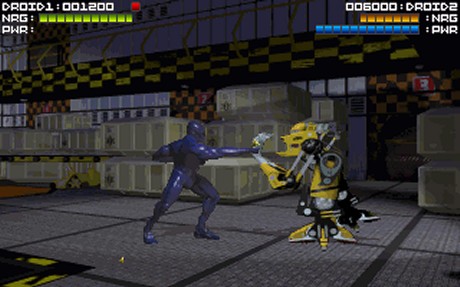
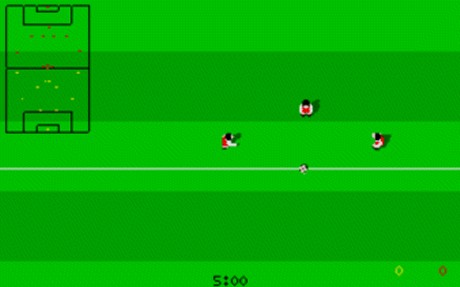
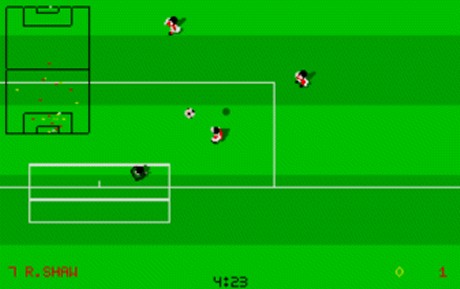
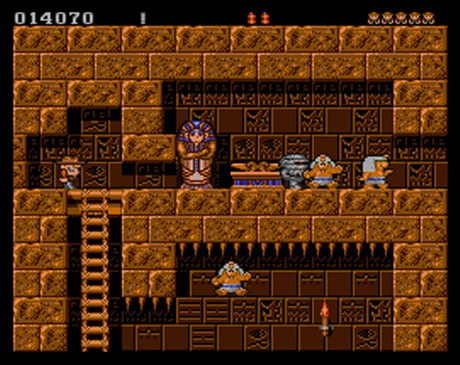
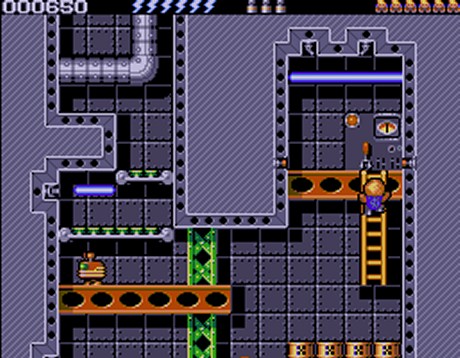
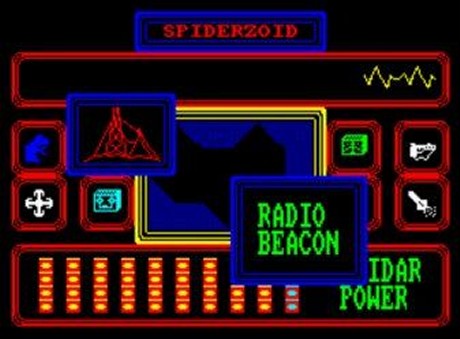
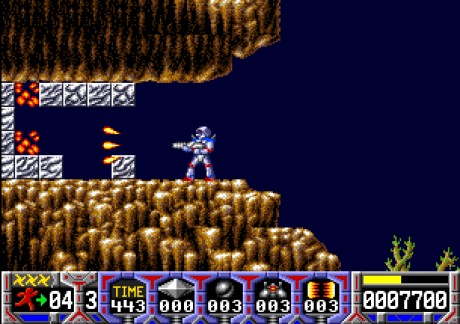
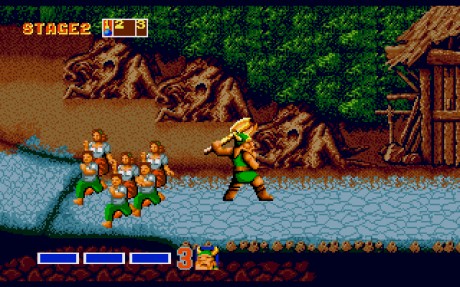
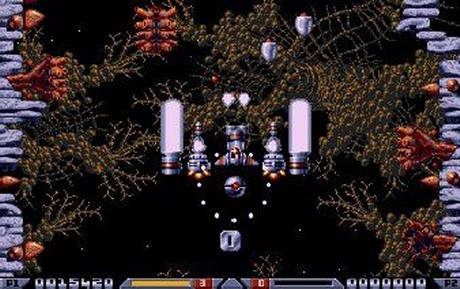
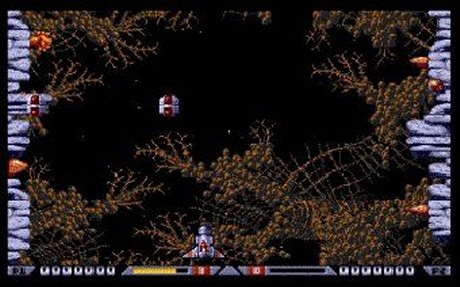

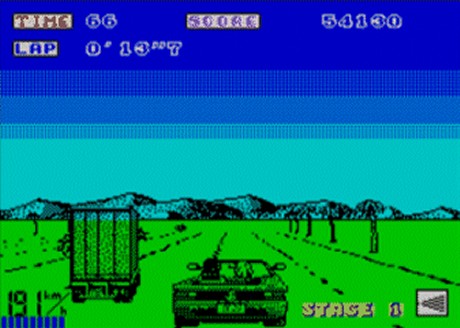
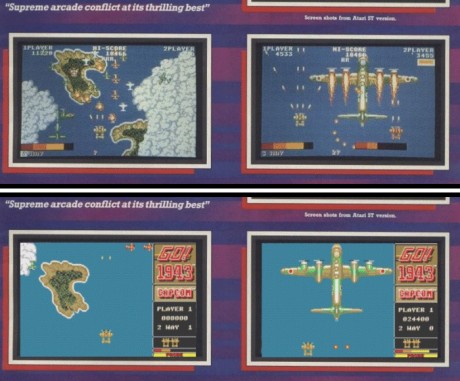
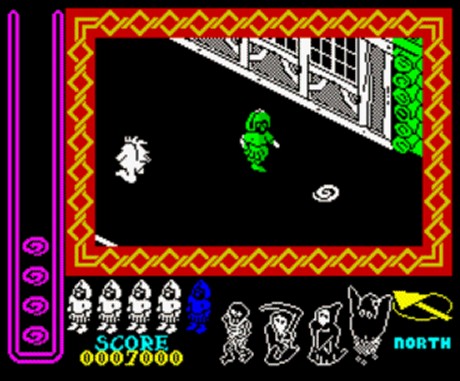



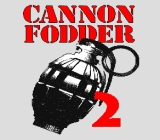

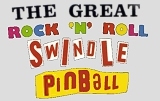

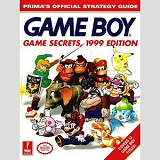

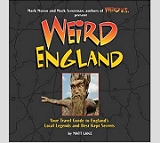
Golden Axe's appeal to me was pretty much Harryhaudenesque Skellies. And that's it
I completely agree about Turrican: missed it in the C64/Amiga heydays, it seemed technically good, but it simply didn't click enough with me – then played it years later, in various versions (even PC unofficial clones), and I really failed to see what all the hype was about. Even the music score didn't seem so great to me: it was okay, not the greatest by Huelsbeck
Zoids: slow, dull, but on that other home computer (you know, the brown one) it was at least redeemed by Hubbard's score.
Outrun wasn't Christmas '85. Pretty sure it was Christmas '87.
You are correct, and I am stupider than a monkey. Fixed.
Of course, even when the critics do take a stand it doesn't always help. Witness the near-universal beating Driv3r was given, only for it to be increasingly seen as some misunderstood gem that critics inexplicably turned on, which really couldn't be more wrong. Gamers can be bloody baffling sometimes.
Rick Dangerous is indeed shit. Even the usually fairly level headed Future mags went nuts over it. Test of memory nothing more. For the Spectrum and Amstrad at least, Switchblade was a far better Gremlin/Core Design game. Many of the good bits of Rick Dangerous, but few of the bad bits.
The thing about Outrun is that if they'd managed to get it moving a bit faster, it wouldn't have been half as bad. If ever a game just needed a few more weeks in development then this was it.
As for Kick Off. Well….. I remember both 16 bit owning chums and the likes of C+VG wetting themselves over it. When I came to play it myself (oddly enough on the ST) I was underwhelmed. Was this all the new 16 bits could offer?
Turrican was OK, but I do prefer Turrican 2. Played both games on a variety of formats and my biggest complaint is that there was no 128k Speccy version. I really reserve a special kind of love for Turrican 2 on the Amiga though. Few games are put together with that kind of love even if it is rather brutal and large. I can only admire the loons who can complete the game (as seen on Youtube).
Xenon 2 falls into the same category as the likes of Blood Money. "Oh look, shiny" and then you eventually realise that beyond the nice exterior is a hollow wooden heart of a game.
The Outrun Europa mystery solved at last!
POKE 24905,0
POKE 24906,0
http://www.worldofspectrum.org/forums/showthread.php?t=39143
The first WWF Wrestlemania game deserves to be on that list too. It's one of the worst examples of the industry and press joining forces to mislead their customers. (Even AP gave it a pass, from memory)
Nope, Gary Penn gave it 39% in issue 10.
I've finished Turrican 2 :-) From what I remember, it was a case of trudging around everywhere way off-track, picking up millions of 1-ups that you would inevitably burn through on the guardians. I think I used a cheat to turn the time limit off though (I loathe time limits).
Personally, I'd like to know what was supposed to be so bloody good about Gods and Magic Pockets. Both really slow and tedious. Robocod wasn't much better. Looked great, but in the end was big and sprawling and empty.
Frontier: Elite II killed a part of me. What little of my childhood innocence remained from having an abusive, alcoholic father was ruined by its sheer shittiness.
Yes, David Braben, I grasp that you comprehend astrophysics and have planned out solar systems and have put them in the game. No, David Braben, asking me to complete a courier mission in a certain amount of time when the solar system's orrery dictates that my jump-in point is 2 years away from the planet I need to get to is not amusing.
Also, please ring Ian Bell to remind you how to do space dog fighing. Realistic frictionless intertia seems to mean that my ship inerringly crashes headlong into the pirate that's trying to scrump my space apples. You see, the laser is on the front of my ship, and their laser is on the front of their ship. A game of Galactic Chicken is then assured, which neither of us is actually agile enough to bring to anything but a suicidal solution.
Oh, he fell out with you because you're a bit of an arse? As you were, then. Good luck with making money from vapourware like "The Outsider".
@RevStu My bad, I thought it scored in the low 50s.
Turrican 2 was brilliant incidentally. As polished a game as ever existed. It even threw in a pair of horizontal AND vertical shmup levels which could have been stand alone games.
If you don't like Turrican 2, you didn't play enough of it.
So, uh, I guess you could say that Gaming Made You? In a way.
I always feel a bit weird about artificial difficulty. I'd rather have my teeth pulled than play something like Rick Dangerous, but it does make me think about games I do love, such as Spelunky, which you can't conceivably expect to win in the first hundred goes, much less the first one. So the game will punish your ignorance, will force you to take note of the things that will kill you before you can blink, time and again. Where it differs from being rote memory learning is, of course, that the levels are entirely randomised each time you play, meaning that you slowly build up your powers of threat assessment. You're constantly exercising these as you play, they're arguably more important even than your ability to control the little Spelunker to success – as opposed to just wandering down a corridor and hoping the game doesn't kill you for no explicable reason.
In the end, then, these turn out to be quite different games. But what about the in-between sorts of game, invariably platformers, that only sprinkled a small amount of unfair difficulty on their levels, just as sort of a mild seasoning? Crash Bandicoot and the better Tomb Raiders on the Playstation; Mischief Makers and Mystical Ninja 2 on the N64; any Megaman branded game on about every platform under the sun. I seem to remember thinking, for my sins, that the sense of mastery you gained over the levels, over their various traps and pitfalls (none of which were anything like as crude or arbitrary as a RD game), was somehow part of what made them fun to play.
"Personally, I'd like to know what was supposed to be so bloody good about Gods and Magic Pockets."
Gods had nice music. It's a bit dull, and I said as much in an “On The Other Hand” box in the original AP review, but unlike Magic Pockets it at least wasn't trying to present itself as a zippy and cutesy arcade game. Magic Pockets was always shit, and in fairness I think everyone now concedes that. It's just that nobody but me spotted it at the time. It would definitely have been in this feature had I not already been a games journalist by then.
And yes, Amiga Robocod was amazingly boring. Do, however, check out the DS version, which is very different and seriously brilliant.
Interesting piece. It was games (and indeed reviews) like those that led to me starting my own little site although for me it was Renegade 3 that really stung.
Turrican's an odd one. I didn't like it but didn't think about that too much but I really enjoyed Turrican 3 on the Amiga and that gets widely panned even now. It seemed perfectly playable (maybe a little too easy) and a lot more focused than the original game (although I only played the Speccy version of that).
I never got the appeal of Xenon 2, Zoids, Kick Off 2 or Rick Dangerous either.
The problem is that when you try to tell it like it is, people get incredibly protective of thier purchases. Try warning people that Just Cause 2 is an exceptionally pretty (and, to be fair, fun) tech demo with dull cut and paste gameplay and people just absolutely lose their shit.
I was hoping for a write-up regarding Rise of the Robots, mostly because my mum believed the hype and bought me it for a birthday.
A mention of Chase HQ is always good. That would turn out to be the last ever game I bought for my beloved Amstrad CPC 464; the good old days.
It's funny that while I agree with many points that Stu always mentions about Kick off 2 (like the fact that it doesn't resemble football at all) i still play it with a chum if i'm craving for some retro-footie action. The thing is, Sensi, while amazing, always felt too safe and predictable, while all the goals look the same. Playing kick off 2 on the other hand is like rollerskating on ice while shuffling daggers. It's impredictability and crapness is part of the fun.
Turrican 2 is one of my favorite games ever and the corrected the failing of the first, specially the "boring" part of it.
I liked Gods, even though it's slow. The Megadrive version plays better though (just because it's a bit faster), even though the sound sucks and it isn't as pretty, just.
Magic pockets, just like Gods, it's slow, but much less playable. I still liked just for the sheer quantity of secrets that game had. And i love the Bitmaps graphical style.
Your critique of Rick Dangerous is mostly correct, but I have a soft spot for its rote learning nonsense. In its defence, certain of its levels do require platforming skill, once you've learnt which actions won't instantly kill you.
[i]In its defence, certain of its levels do require platforming skill, once you've learnt which actions won't instantly kill you.[/i]
In its defence, once you chew past the inch-thick layer of fossilised dinosaur turd, the boiled egg inside has a bravely yolky flavour.
Due to some emulators like Steem ( suitable for Atari ST games), anyone can play all on PC/Windows and Linux, all these games and see awful is trying. Talking about Kick Off 2 or even Player Manager 2 for Atari ST, we had some imperceptible flickering display and unplayable in the pitch. Sensible Soccer was funny but predictable. After all these soccer video games, a hidden gem was released in 1997(last version is from 1999). It's a kind of tribute to Kick Off( because of top down view), called Total Soccer.
There's not a review here, I suppose.
Despite rejected/neglected by those who have played Kick Off or Sensible Soccer for years and are still playing today,Total Soccer is also played by people all over the world. A soccer simulation close to its name, really awesome, playable, with a great ball control- aspects that can be watched
in the pitch. Both versions run on Windows.
And a detail: like real soccer there aren't two matches alike.
See for yourselves at http://totalsoccer4all.tumblr.com/